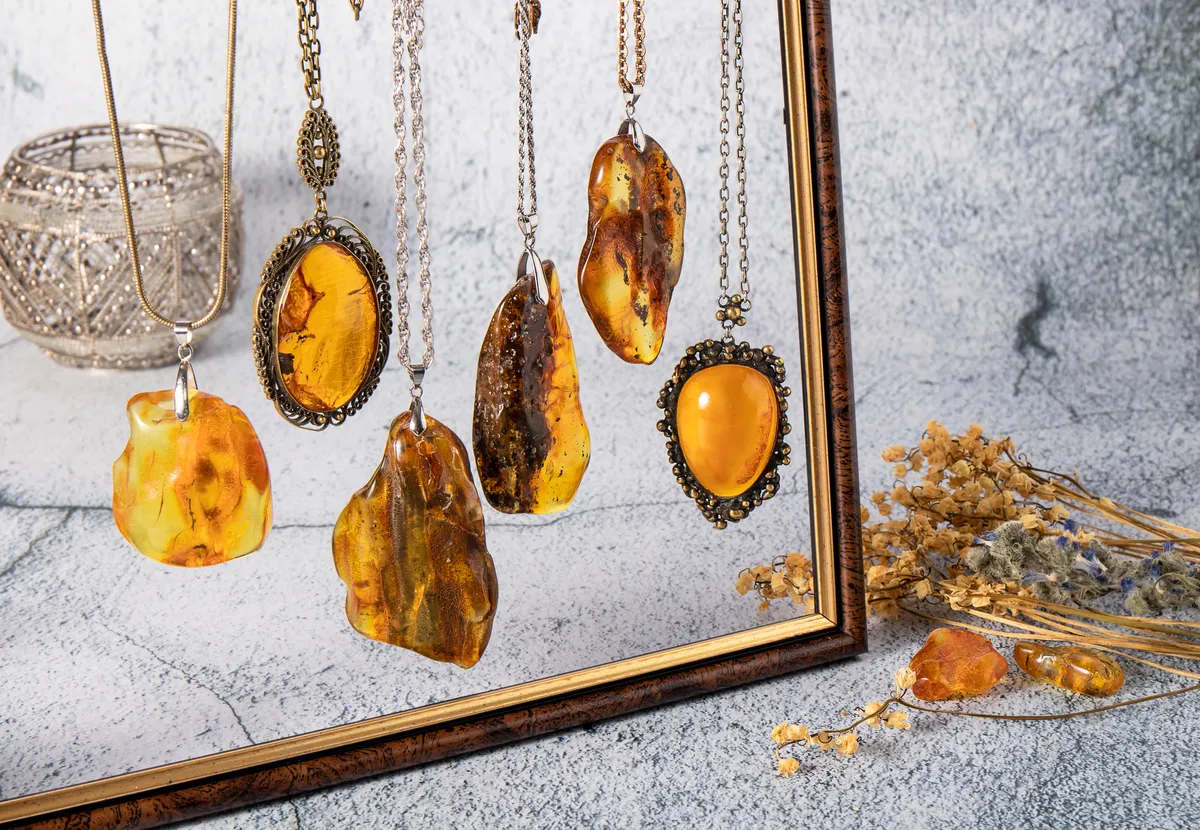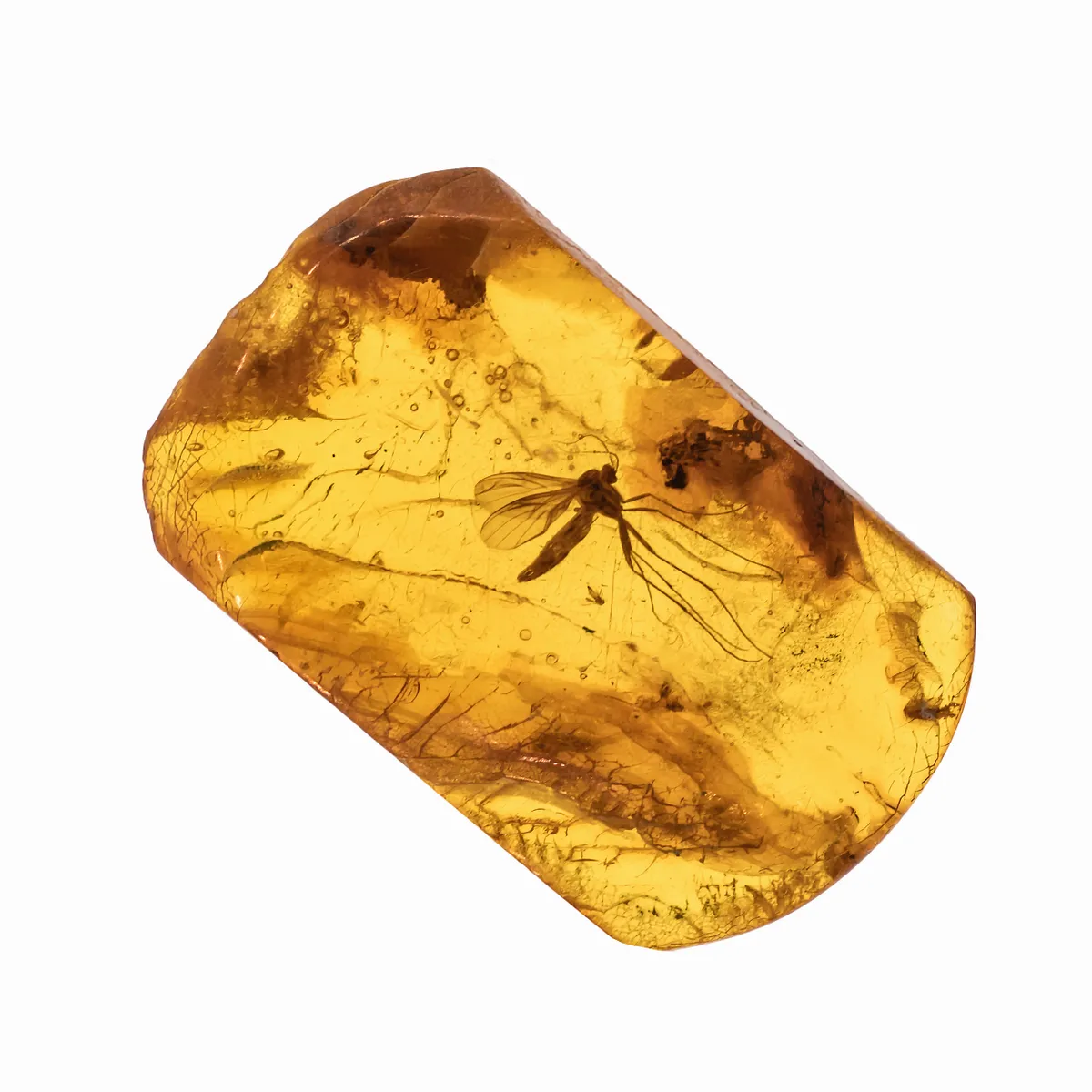It's likely you're already quite familiar with amber, it's used frequently in jewellery and if you've watched the (numerous) Jurassic Park movies you may remember the scientists extracting dinosaur blood from the gut of a trapped and long-dead mosquito and using the DNA in the blood to create the dinosaurs. But what exactly is amber, why is it not considered a ‘natural’ mineral – and just how correct was Jurassic Park in its science? Evolutionary biologist JV Chamary explains:
What is amber?
Amber is fossilised resin, a viscous liquid that’s produced by certain plants. It’s solid but not very hard, reaching 2.5 on the 10-point Mohs hardness scale (diamond is 10), the same as a fingernail.
Though considered a gemstone because it’s used in jewellery, amber isn’t a ‘natural’ mineral because it’s formed by organisms, not geological processes. And despite its name, colours range from transparent to black and it can come in rare, desirable forms such as blue amber.

What is resin?
Resin is released in response to injury. Most resins are made by trees and are secreted if a trunk is gouged open, a branch is snapped off or an insect bores through wood. Resin is a liquid bandage for the tree, protecting it by sealing the wound to prevent invasion by organisms such as bacteria, fungi or insects. If resin is like blood flowing from a deep cut, amber is the dried-up scab.
What is resin actually made of?
It consists of polymers of hydrocarbon rings known as terpenes, which account for around 60% of plant biomolecules. Turpentine, the fluid artists use to thin oil paint, is distilled resin. Unlike other plant fluids you may have heard of, like sap or gum, resins aren’t water-soluble and most ambers won’t dissolve.
But the composition determines its properties: dammar-type amber can be dissolved as its terpene polymers aren’t linked; witch-hazel makes resins that also contain ‘styrene’ hydrocarbons, so the resulting amber includes a dense, plastic-like polystyrene.
How does amber form?
Resin becomes more stable over time through molecular changes like the formation of links across polymers. Crosslinks make amber insoluble, strong and relatively inert, with a melting point between 200 and 400ºC.
Most organic matter naturally decomposes – a process soil scientists confusingly call ‘mineralisation’ – but amber doesn’t mineralise and can’t be dated via decay of radioactive carbon-14. Amber is arbitrarily defined as being at least 40,000 years old – the limit of carbon dating. Before then the substance goes by the name of copal or sub-fossil resin.
Which plants produce amber?
Most ambers from the ongoing Cenozoic era, beginning 66 million years ago (MYA), were produced by conifer trees, though some originate from flowering plants of the pea family. Almost all amber from the Mesozoic era, 252-66 MYA, was made by conifers such as cedars, redwoods and ancient ‘southern pines’. The oldest samples, from around 320 MYA, were made by tree ferns of the Paleozoic era, 541-252 MYA.
Where is amber found?
Amber occurs across the globe, from the Arctic to Antarctic, and most deposits are found within the sediments that became buried in river deltas and lagoons.
Why is amber important?
Because it preserves organisms. Resin surrounds and oozes into living things to embalm and entomb their bodies. Besides helping to fossilise the delicate structures of small creatures – particularly arthropods – in microscopic detail, it can also reveal lifestyles, showing that ancient spiders spun webs to catch prey, for instance, and that ants and termites formed colonies.
Amber is very useful to palaeontologists because it captures characteristics that indicate evolutionary change or relationships, as well as providing snapshots of prehistoric behaviour.
Can amber preserve DNA, like in Jurassic Park?
Probably not. In the 1993 Spielberg film, DNA is extracted from a mosquito that had drunk dinosaur blood before becoming encased in amber. Scientific studies have uncovered a variety of biological materials in amber, including amino acids from dinosaur feathers, but amber usually preserves only a lifelike impression or trace of an organism, and doesn’t protect molecules from degradation.

DNA is susceptible to hydrolysis, so any trapped moisture would cause the genetic material to break down. “Life, uh finds a way” by adapting to its environment, but biology can’t beat chemistry. So it’s highly unlikely that amber could bring back Mesozoic reptiles such as Triceratops or T-rex. Sorry!
Main image: Spider in an amber. © Getty
